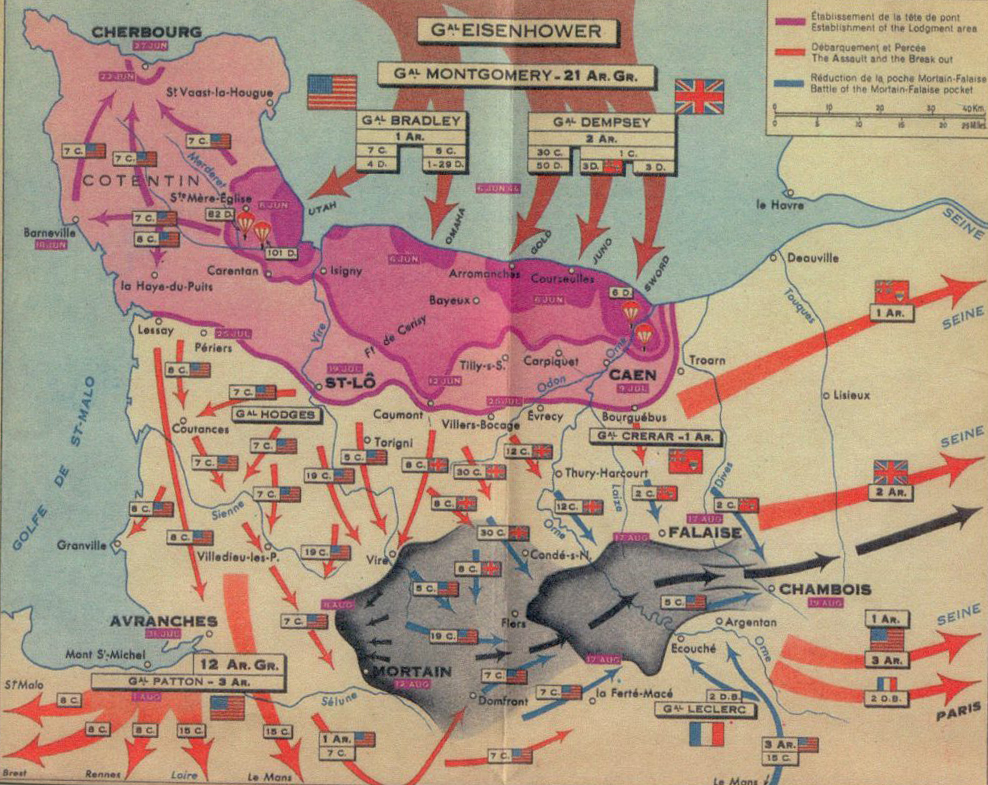Today marks the 75th Anniversary of D-Day and Myrtle Beach's connection
“They fight not for the lust of conquest. They fight to end conquest. They fight to liberate.”
-- President Franklin D. Roosevelt, Official Announcement of Invasion
Today, June 6, 2019, marks the 75th Anniversary of D-Day. “D-Day” historically refers to the Allied Forces’ operation to land along the Normandy coastline in World War II in an effort to liberate France from German forces. The day was Tuesday, June 6, 1944, and it marked a day of change in the tides of the war. (Read on for Myrtle Beach’s connection to D-Day….)
“Hitler made only one big mistake when he built his ‘Atlantic Wall.’ He forgot to put a roof on it.”
-- WWII U.S. Paratrooper Aphorism
Codenamed “Operation Neptune,” it was the largest orchestrated airborne and seaborne invasion in the history. Beginning in the early hours of the morning in darkness, airborne forces from the United States, Britain and Canada landed inland by parachutes to weaken German forces and secure roads for the impending extensive amphibious landings. Aerial bombardment followed the airborne landings to limit the mobility of German troops, preventing them from maintaining Hitler’s “Atlantic Wall.”
“All I could see was water, miles and miles of water.”
-- Private David Kenyon Webster, American Soldier, Journalist and Author
The amphibious landing’s purpose was to secure Normandy’s coastline at five beach territories, all given codenames. As the map shows, American forces landed at the “Utah” and “Omaha” beaches, with British forces landing at “Gold,” “Juno” and “Sword” beaches. Only two beaches were gained and linked on June 6 (Gold and Juno). In unison, the beaches were not fully captured and interconnected until June 12, 1944. As the fighting continued, the Allied Forces gained a strong foothold and gradually gained speed moving inland, liberating France from German Forces.
The operation did not go as planned, however. The weather delayed the operation, and airborne and coastline invasion locations were confused on the day of the event. These hurdles meant the Allied Forces failed to achieve their outlined goals on the first day. In spite of not achieving major objectives, the soldiers pressed on with dedication and drive.
The result of D-Day was a decisive Allied victory, but it came with the ultimate sacrifice of countless troops. German causalities are estimated to be four to nine thousand men. The greatest casualty numbers were American soldiers, with more than 6,600 brave lives lost. Allied Forces also lost about 2,700 United Kingdom soldiers and nearly 1,000 Canadian soldiers.
Today, June 6, 2019, the world remembers those brave souls who fought to liberate a country in need. Numerous military monuments and shrines mark the great sacrifice of American forces in World War II, with memorials located in France, Britain and the United States of America. Churches replaced stained glass panels with colorful depictions of American soldiers, too. For example, stained glass windows depict American paratroopers landing in the town of Saint Mere Eglise, France. And, the “American Memorial Chapel,” located within St. Paul’s Cathedral in London, England, features stained glass depictions of every American state and wood carvings of American birds, plants and flowers.
Myrtle Beach’s connection…
Following the declaration of war in the wake of the Pearl Harbor attack, the United States Army Air Corps opened formal operations in March 1942 at what was named the Myrtle Beach Bombing and Gunnery Training Range, which also encompassed the Myrtle Beach airport. Construction began to meet the urgent needs for combat air crew training and a “wooden city,” affectionately known as “Splinter City,” began to take shape in the form of offices, barracks, a hospital and various maintenance and training facilities. Other facilities were used in 1943 to house German prisoners of World War II, with some captured during D-Day efforts.
Splinter City, of course, evolved to later become the Myrtle Beach Air Force Base, playing a primary role in the Vietnam and Gulf Wars before closing in 1993. The former Myrtle Beach Air Force Base is now known as the present-day Market Common area.
Listen to the Historic D-Day News Broadcast here… https://www.dday.org/overview/
D-DAY MAP
SPLINTER CITY
